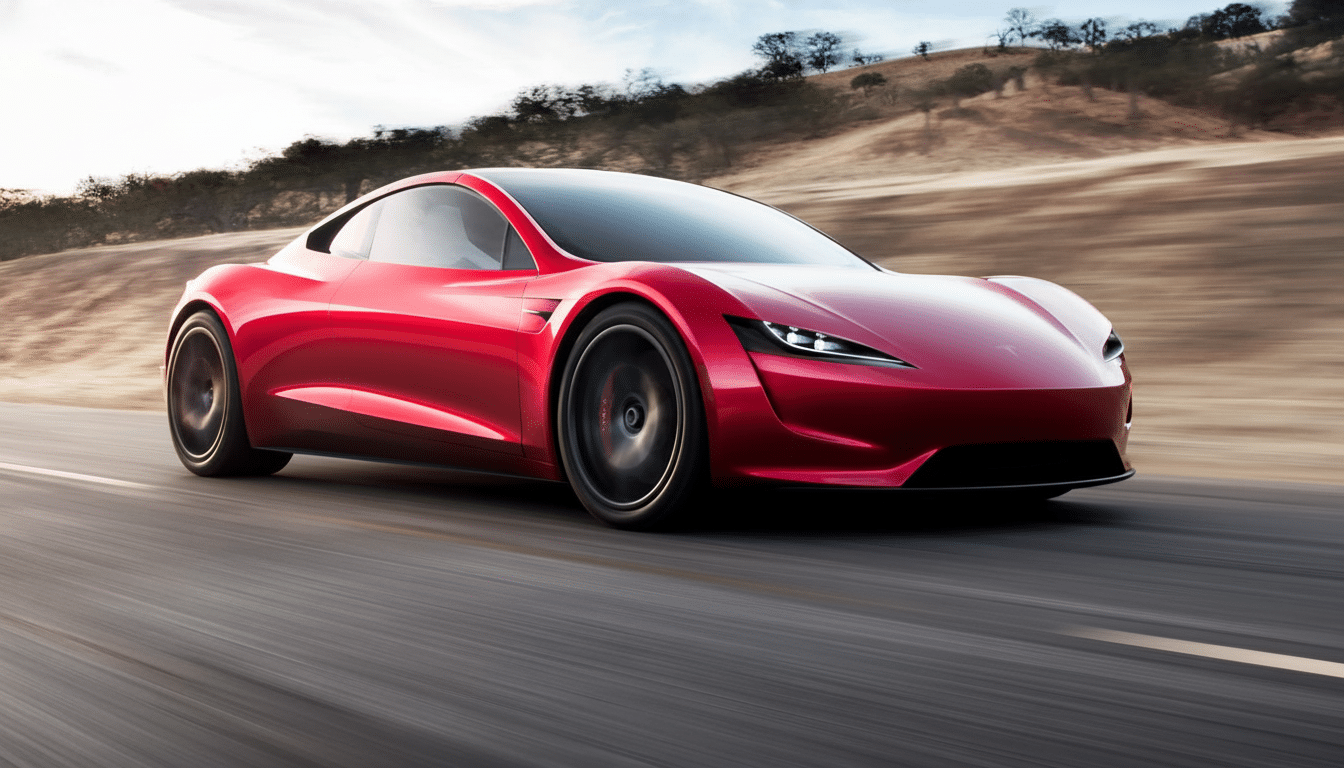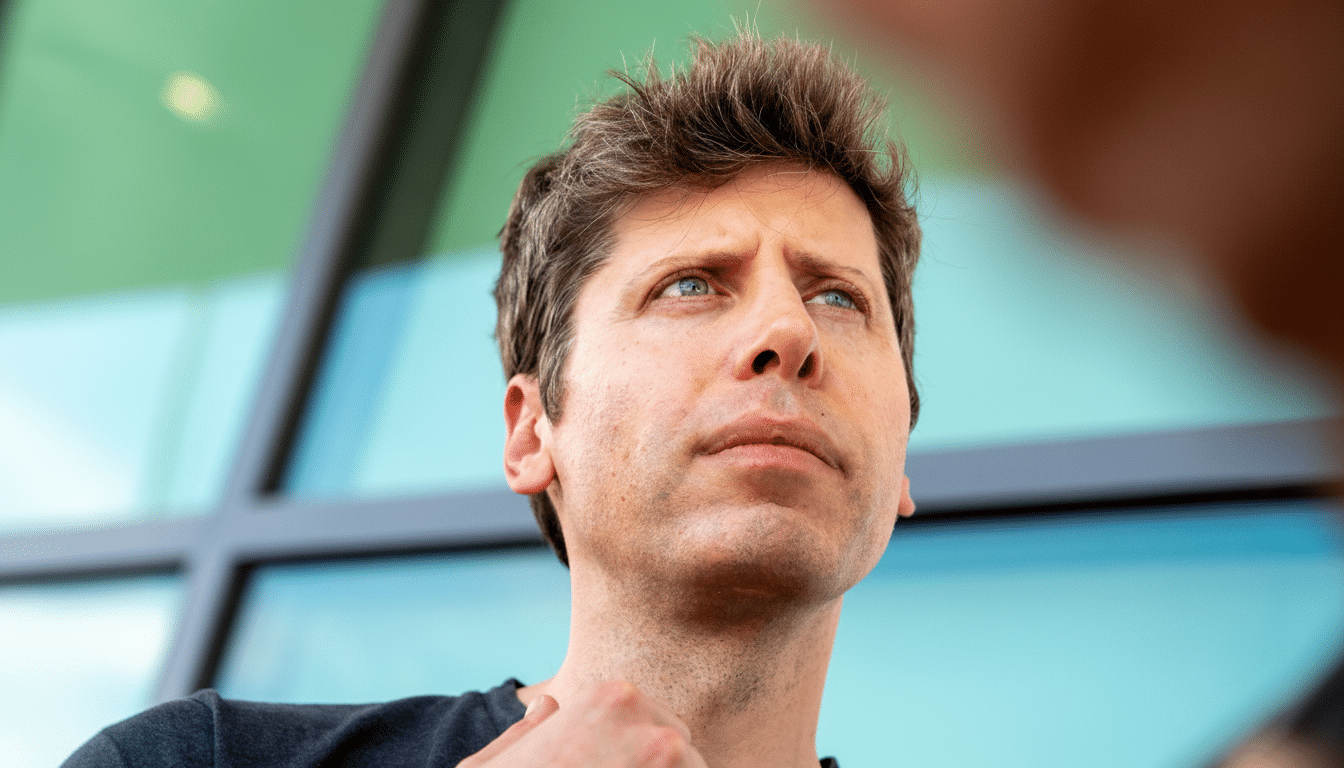Musk and Sam Altman are feuding again, and this time it is over Tesla’s Roadster, which is taking longer to reach the road than many expected. Musk teased an imminent demo and “wild” technology for the vehicle, and Altman publicly announced his reservation’s cancellation and the trouble he had getting a refund of his $50,000 deposit, igniting the usual social media war.
Why the Roadster sparked a fresh clash between Musk and Altman
Tesla’s Roadster has always been a symbolically important car for the company. It is supposed to reveal the brand’s luminousness and technical renegade spirit akin to a concept car that is not for the museum but to be bought. Yet the manifestation has been postponed numerous times, shifting early optimism into doubt. This overall ambivalence went public when Musk told Joe Rogan on The Joe Rogan Experience that a public demo is around the corner, and he has been teasing features, including whether it will contain technology beyond what Tesla has disclosed.

Sam Altman reserved the vehicle many years ago and stated that he surrendered and wanted to retake his deposit, and that he had issues communicating with the firm. That post prompted Musk to retort that the reimbursement was processed and rekindled their broader debate over OpenAI’s constitution and visions. Within the span of hours, the exchange was concerning far more than an auto.
What Musk is promising now for the delayed Tesla Roadster
Musk’s latest tease is that the Roadster will debut with features that “don’t sound real,” including a nod to something akin to short bursts of thrust. He has previously alluded to a special package borrowing from spacecraft-style cold-gas thrusters developed by SpaceX engineers. Specialty EV outlets such as Electrek have long speculated that any “flying” talk is more likely controlled lift or hover-like demonstrations rather than sustained flight.
On-paper targets announced at the original reveal were audacious: sub-two-second 0–60 mph acceleration and a range beyond 600 miles per charge. Those goals, if achievable in a production car, would set new benchmarks. But turning headline-grabbing prototypes into a mass-certifiable vehicle is where even the most advanced automakers often trip. That’s part of why investor and customer patience has worn thin. Altman said the wait had simply become too long and that he hit an email dead end when trying to retrieve his $50,000. Musk countered that the money was returned within a day and accused Altman of omitting that detail. It’s an unusually public window into a process that typically happens quietly; Tesla’s reservation agreements have historically allowed refunds until a formal production order is locked, though experiences can vary by region and program.
The exchange quickly widened into familiar territory. Musk reiterated grievances about OpenAI’s governance and change to a capped-profit model, while Altman argued that the current structure is what enables the organization to pursue its mission at scale. Their personal feud predates the Roadster’s delays, but the car provided a convenient stage.

Reality check on tech behind thruster-like Roadster features
Even for a low-volume flagship, integrating thruster-like systems raises hard questions: crash standards, noise, thermal management, liability. Automotive safety engineers note that anything producing external force must be consistent and controllable under all conditions, including wet roads and debris. That’s solvable in principle but costly to validate at automotive scale, and it’s unclear how regulators would classify such systems for road use.
There’s precedent for ambitious promises being tempered by what comes out of the production line. The original Roadster proved Tesla could deliver a sports car that rewrote range expectations, but it did so by partnering extensively on the platform. This time, the company must integrate cutting-edge propulsion tricks into an in-house architecture while managing core programs like Model Y, Cybertruck, and software features tied to autonomy.
The stakes for Tesla and the broader electric vehicle narrative
The backdrop is tougher than in earlier EV boom cycles. According to Tesla’s most recent earnings materials, profitability has come under pressure, and margins have narrowed. The company reported a 37% drop in net income last quarter after price cuts and factory retooling weighed on results, even though the brand remains a market-share leader in battery-electric sales.
Against that context, a showstopping Roadster demo could re-energize the story Tesla tells to customers, to investors, to engineers it wants to recruit. But if the debut slips again or the headline features get watered down, it risks becoming another reminder of the gap that can open between Musk’s product storytelling and the results achieved by the company’s actual manufacturing complex.
What to watch next for Tesla Roadster timelines and specs
- Whether Tesla issues fresh specifications, homologation timelines, and transparent guidance on the reservation program.
- Independent demonstrations: track runs with third-party timing and range tests using industry protocols.
- Safety briefings that explain how any novel propulsion assists are safeguarded for real-world use.
And for the feud? It likely continues in parallel. Musk’s growing AI efforts with xAI and Altman’s leadership of OpenAI ensure they’ll keep overlapping on technology, talent, and public attention. For now, a car that doesn’t yet exist in customers’ garages has once again become a proxy battle over credibility, ambition, and who gets to define the future of tech.

